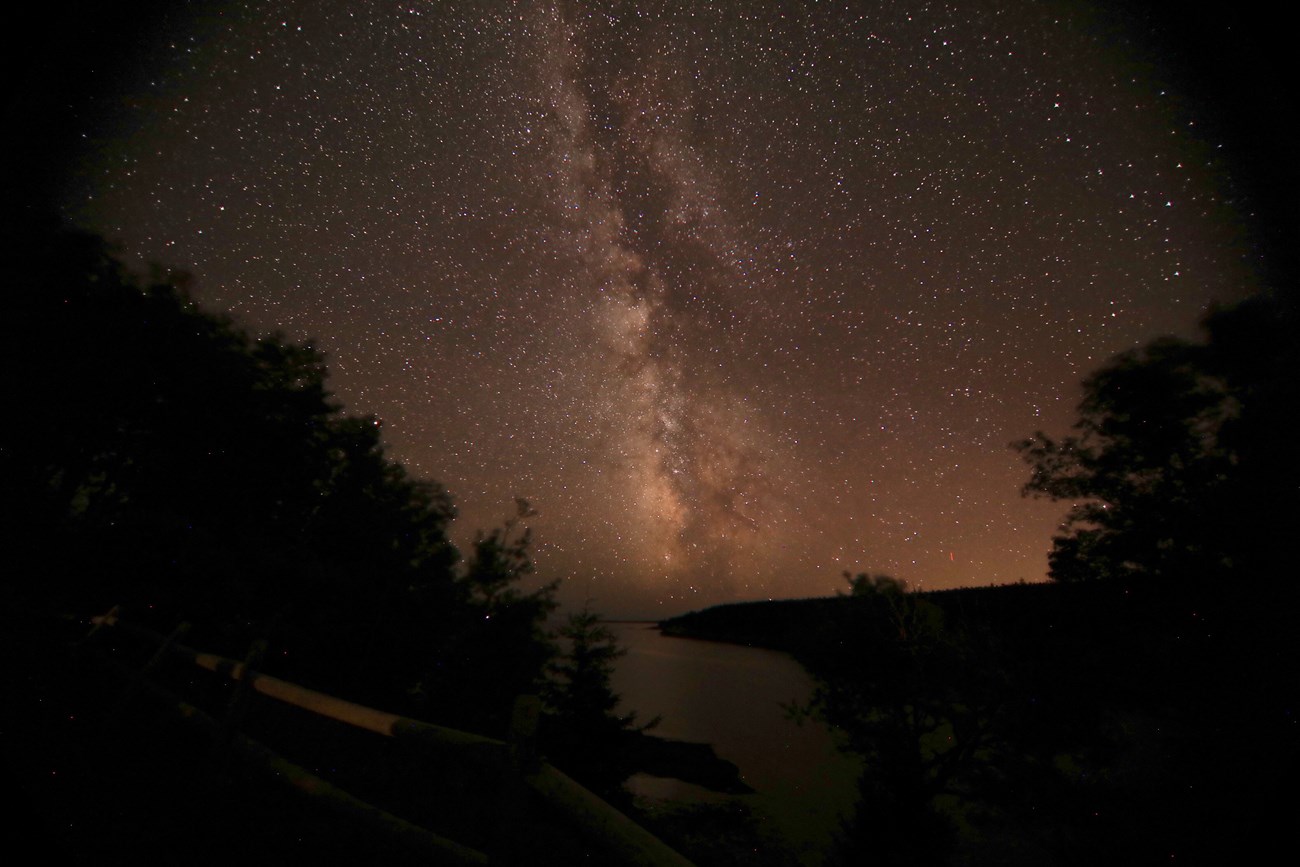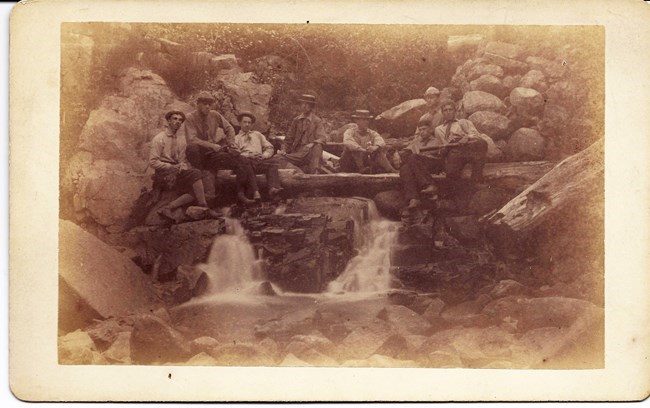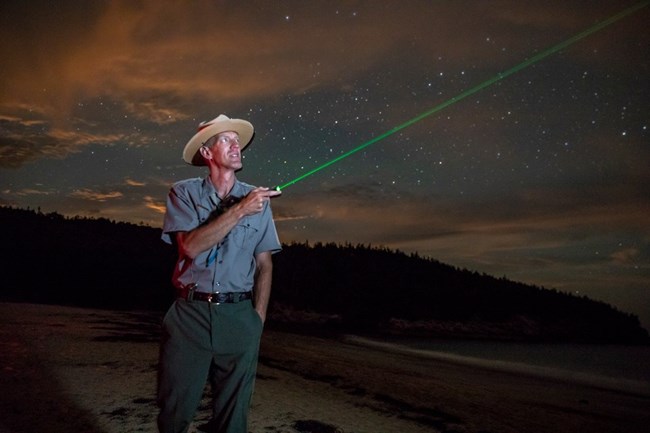Last updated: October 24, 2020
Article
At Home within the Heavens

NPS/ S. Stalker
Storytelling and Guiding
The very earliest Wabanaki people looked to the same stars over Mount Desert Island as they do today, only minimally altered by light pollution. In Wabanaki culture, the winter season is traditionally a time to tell stories, many of which relate to the stars. Today, star stories of the dawnland remain important to the Wabanaki communities in Maine.
Courtesy of Mount Desert Island Historical Society
and the brilliant bursts of light with which the moon
surprised us now and then, made a very beautiful sight.”
- Champlain Society Records: August 8, 1881
Inspiring and Creating
To many, the night sky is a source of beauty. In the mid-1800s, the Hudson River School of Artists emerged, seeking to highlight wild and powerful American landscapes. Many of these artists visited Mount Desert Island. Their work enticed a public looking to escape from industrialized cities. In under a decade Mount Desert Island went from relatively unknown, to a premier tourist destination for the wealthy. A handful of the paintings produced in this era depicted the area at night. For example, Fitz Hugh Lane’s “Fishing Party”, illustrates a full moon shining over the ocean, with stars peeking out behind clouds.
NPS/ S. Stalker
Looking and Remembering
The night sky continues to be important to those who call Acadia National Park home. To the seasonal park ranger, who moves from park to park every six months, the night sky remains as the one constant in their life. While their surroundings, friends, and coworkers change, the constellations overhead remain as a familiar face. The rising of Scorpious each summer marks the move to a new park, while Orion's Belt calls seasonal rangers back to their winter homes. To a ranger who has lived on Mount Desert Island his entire life, and has worked in Acadia for over twenty years, the night sky is home:
Courtesy of Yehyun Kim, Friends of Acadia
“I am fortunate enough to live here, surrounded by Acadia, where I can experience a pristine night sky, whether it be the moon, stars or the Milky Way. For me it evokes a sense of wonder and beauty and affords me the opportunity to share it with others when they are attending one of my interpretive ranger programs or gathered as friends.” -Kirk Lurvey, Astronomy Ranger
